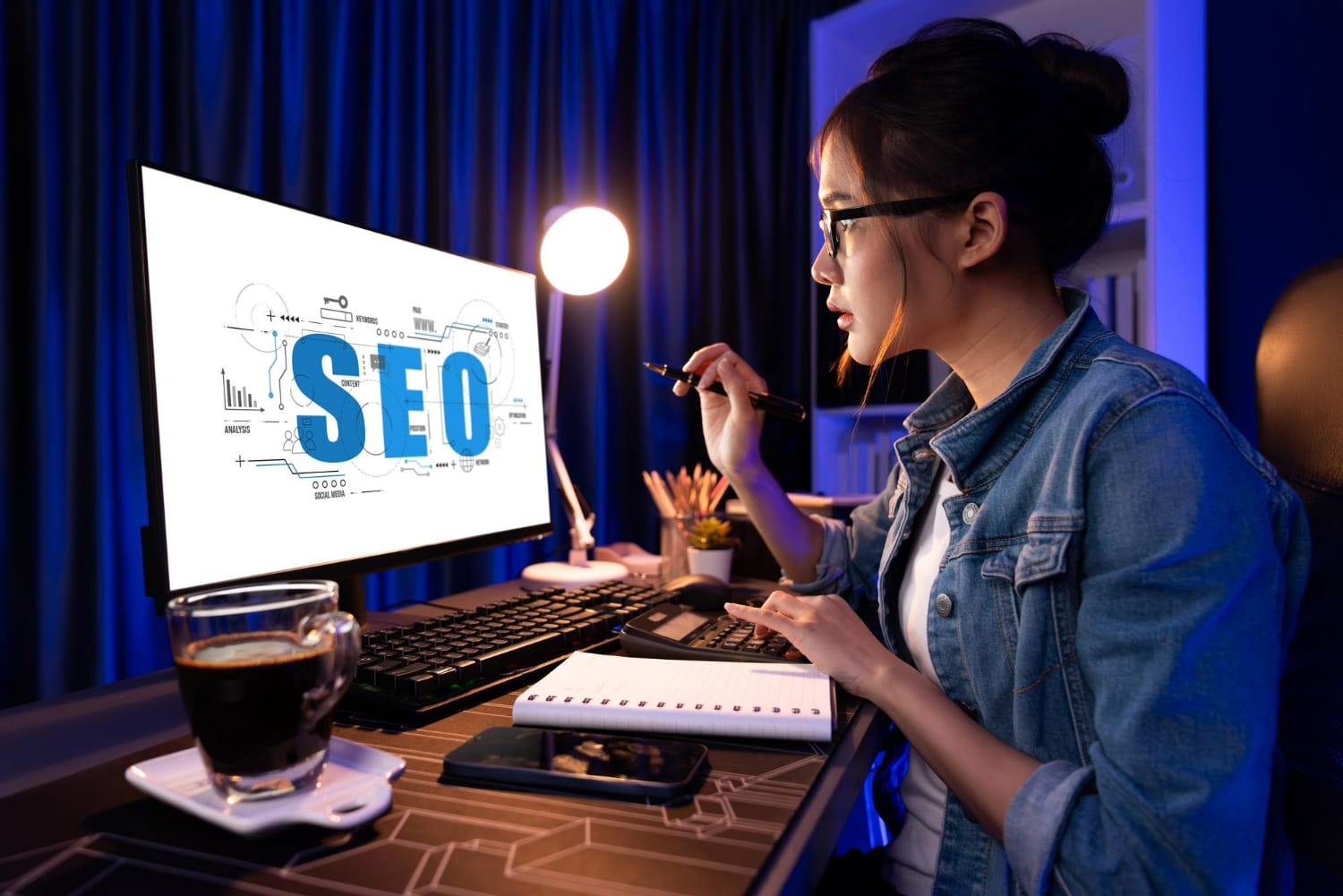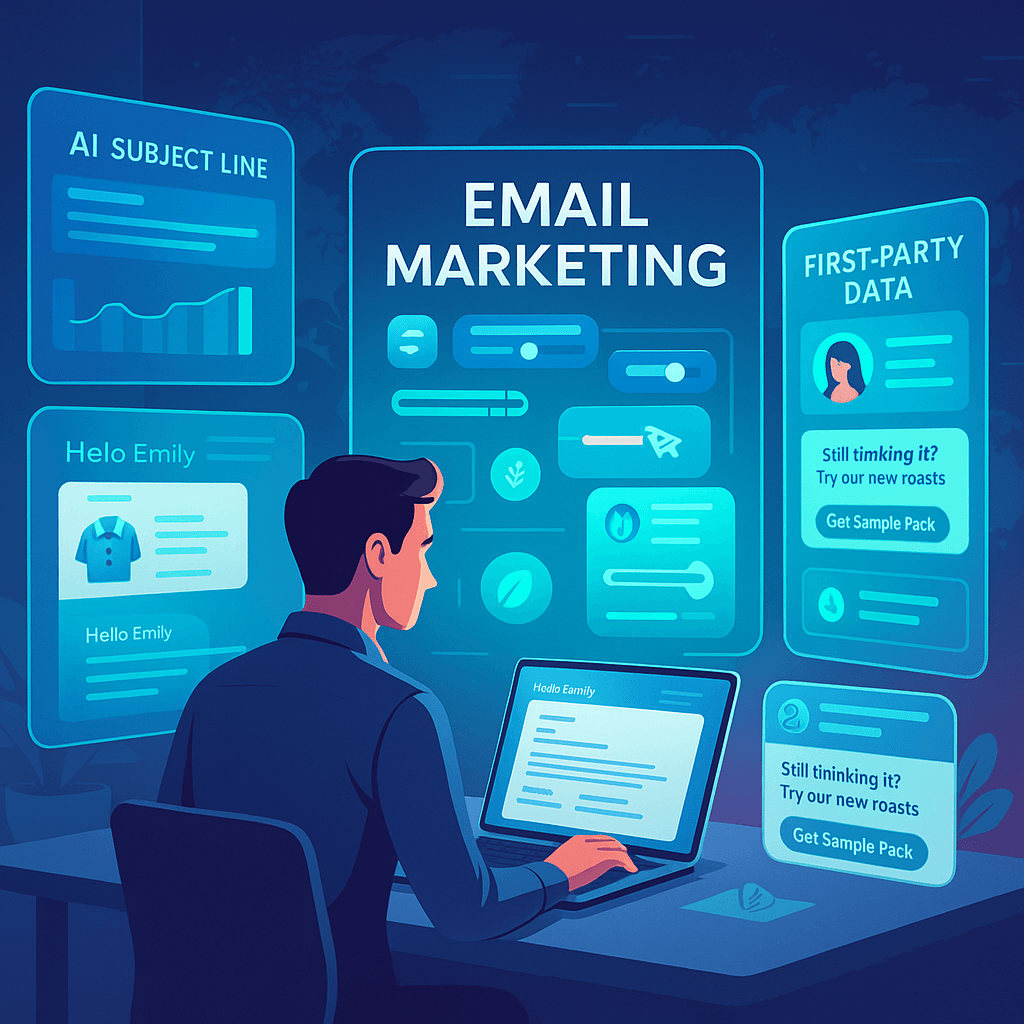I still remember the early days of SEO—keyword stuffing, backlink schemes, and obsessing over meta tags. We’ve come so far. After spending the last decade helping businesses navigate the ever-shifting SEO landscape, I’ve never seen changes happen as rapidly as they are right now.
Let me share what I’m seeing on the frontlines with my clients in 2025, and what we’re preparing for in 2026. These aren’t theoretical predictions—these are real challenges and opportunities I’m tackling alongside business owners every day.
1. AI-Driven Content Optimization: The Human Element Matters More Than Ever
Last month, I met with a client whose traffic had plummeted despite investing heavily in AI content tools. Their content checked all the technical boxes but felt hollow. We completely shifted approach—bringing in subject matter experts to collaborate with writers, sharing personal experiences, and infusing genuine personality into their blog.
The results were dramatic—a 37% increase in organic traffic within six weeks.
While AI tools are reshaping how we research and optimize content, the machines simply can’t replicate hard-earned expertise and authentic perspectives. I’ve found that the most effective Advanced SEO Strategies now involve using AI as a research assistant while letting human creativity and expertise lead the way.
What’s working for my clients:
- Having real practitioners review and enhance content with personal insights
- Including original research, interviews, and firsthand experiences
- Creating distinctive brand voices that no AI can replicate
- Focusing on questions their customers actually ask (not just what keyword tools suggest)
The winning formula I see consistently is human expertise first, AI enhancement second—never the other way around.
2. Multimodal Search: It’s Messy, Personal, and Transformative
“I didn’t type a single search query yesterday,” my 19-year-old niece told me over coffee recently. She had found restaurants by scanning menus with Google Lens, asked her smart speaker for weather updates, and discovered products entirely through video search.
This multimodal search behavior encompasses all SEO-related aspects of online visibility in ways that many businesses aren’t prepared for. The clients seeing the best results have embraced this messiness rather than clinging to text-only SEO traditions.
Last quarter, I worked with a home goods retailer who completely reimagined their product listings with this multimodal world in mind. Instead of just optimizing text descriptions, we:
- Created visual search thumbnails specifically designed to stand out in image results
- Developed product demos optimized for video search
- Restructured content to answer voice search questions naturally
- Built a visual shopping guide that drove 3x more traffic than their traditional category pages
The businesses winning at multimodal search aren’t treating these channels as add-ons—they’re fundamentally rethinking how people discover their products and services through diverse search experiences.
3. Zero-Click Search: From Frustration to Opportunity
“We’re getting all this exposure but no clicks!” This frustration is something I hear weekly from clients seeing their content appear in featured snippets and knowledge panels. The zero-click trend has only accelerated in 2025.
After numerous experiments with clients across different industries, I’ve found a counterintuitive approach that works: lean into zero-click results strategically, but design them as teasers that prompt deeper questions.
One finance client implemented this approach brilliantly. Rather than fighting against having their mortgage calculator information displayed directly in search results, they restructured their content to provide the basic calculation in a snippet-friendly format while hinting at personalized insights available on their site. Their traffic actually increased by 22% despite more information being available without clicking.
This strategic approach to SERP features has become particularly important in SEO Strategies for Startups with limited brand recognition. For these clients, appearing prominently in search results builds credibility even when immediate clicks don’t follow.
4. User Experience: The Gap Between Good and Great is Widening
The technical bar for “acceptable” user experience keeps rising, but I’m noticing something fascinating among my clients—there’s now a massive performance gap between sites that meet the minimum Core Web Vitals thresholds and those that truly excel.
I recently audited two competing financial services sites. Both technically passed Core Web Vitals assessments, but one delivered a truly seamless experience that felt instantaneous. Their pages loaded critical content in under a second, maintained perfect visual stability, and enabled immediate interaction. The difference in user engagement metrics was stunning—their average session duration was 3.2x higher than their “technically adequate” competitor.
What separates the leaders from the merely compliant:
- Obsessive performance optimization beyond just passing thresholds
- Constant user testing with real customers on actual devices
- Predictive loading based on common user journeys
- Thoughtful implementation of progressive enhancement
One e-commerce client described their approach perfectly: “We’re not building to satisfy Google’s requirements—we’re building the site we would want to use ourselves, and the rankings followed.”
5. E-E-A-T and Topical Authority: You Can’t Fake This Anymore
“Who actually wrote this?” This question has become central to how search engines evaluate content in 2025. I’ve watched countless businesses struggle as their generic, outsourced content fails to perform despite perfect on-page optimization.
The most dramatic SEO turnaround I witnessed this year came from a health and wellness client who completely transformed their approach. Instead of publishing high-volume, superficial content, they focused exclusively on topics where their team had genuine expertise. Their medical director began sharing personal insights from 20+ years of practice, their nutritionists documented real client outcomes, and they published original research findings from their clinic.
Within three months, their organic traffic increased by 127%, despite publishing 70% fewer articles.
What I tell every client now: better to own five topics completely than to compete halfheartedly in fifty. This focus on depth over breadth, on genuine expertise over content volume, represents the most significant shift in content strategy I’ve seen in my career.
What This All Means For You
Throughout my years inSEO , I’ve witnessed countless algorithm updates and technological shifts, but the underlying truth remains consistent: search engines are getting better at recognizing what humans genuinely value.
The most successful sites in 2025-2026 won’t be those with the largest content budgets or the most sophisticated technical implementations (though those certainly help). The winners will be businesses that truly understand their audiences, share authentic expertise, and create digital experiences that people genuinely enjoy.
As we navigate these evolving trends together, remember that behind every algorithm update is a simple goal: connecting people with the most helpful, trustworthy, and relevant information. By focusing on providing real value rather than chasing algorithmic shortcuts, you’ll build not just traffic but lasting relationships with your audience.
What SEO trends are you seeing in your industry? I’d love to hear your experiences in the comments below or connect directly to discuss how these trends might impact your specific business challenges.





